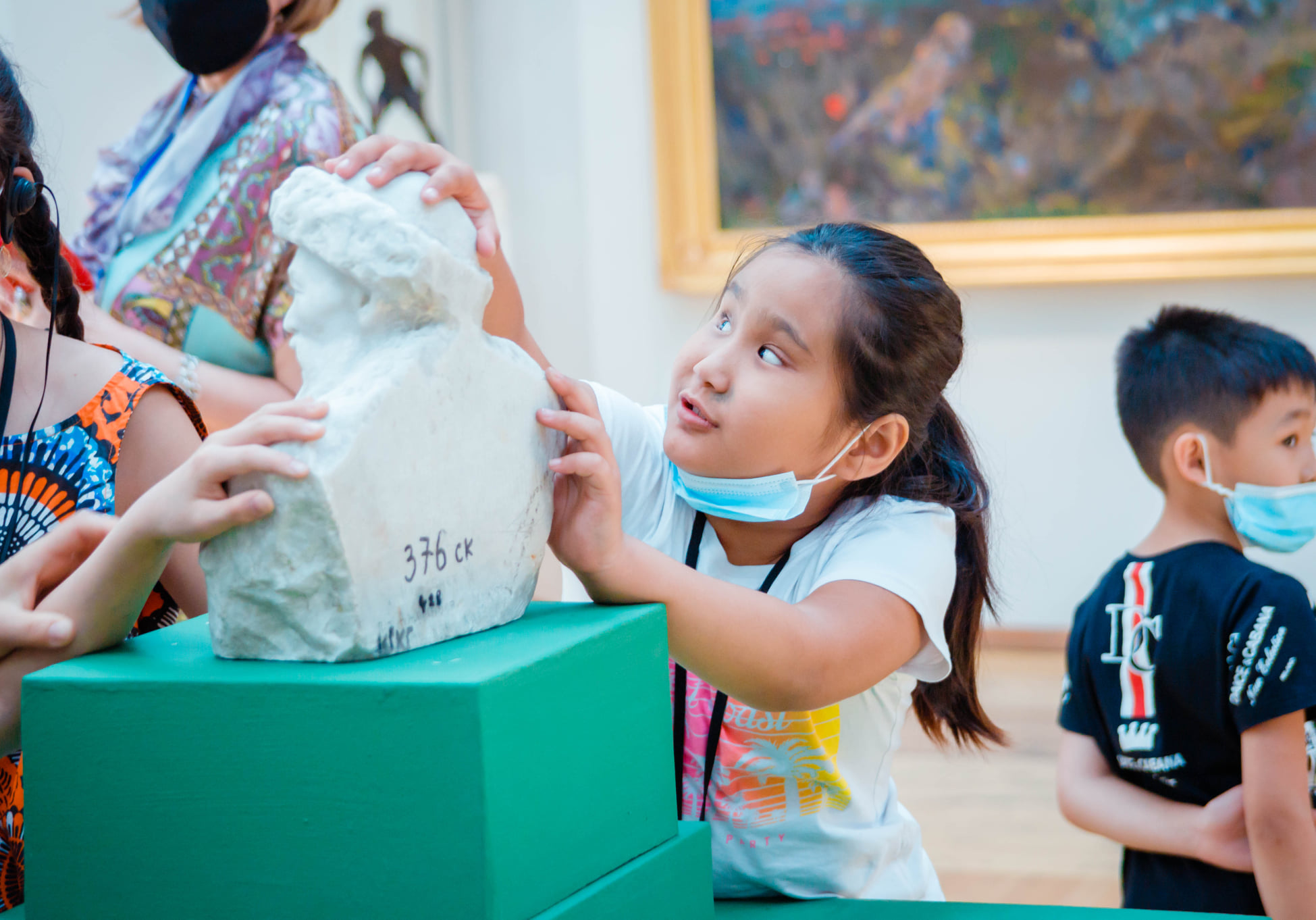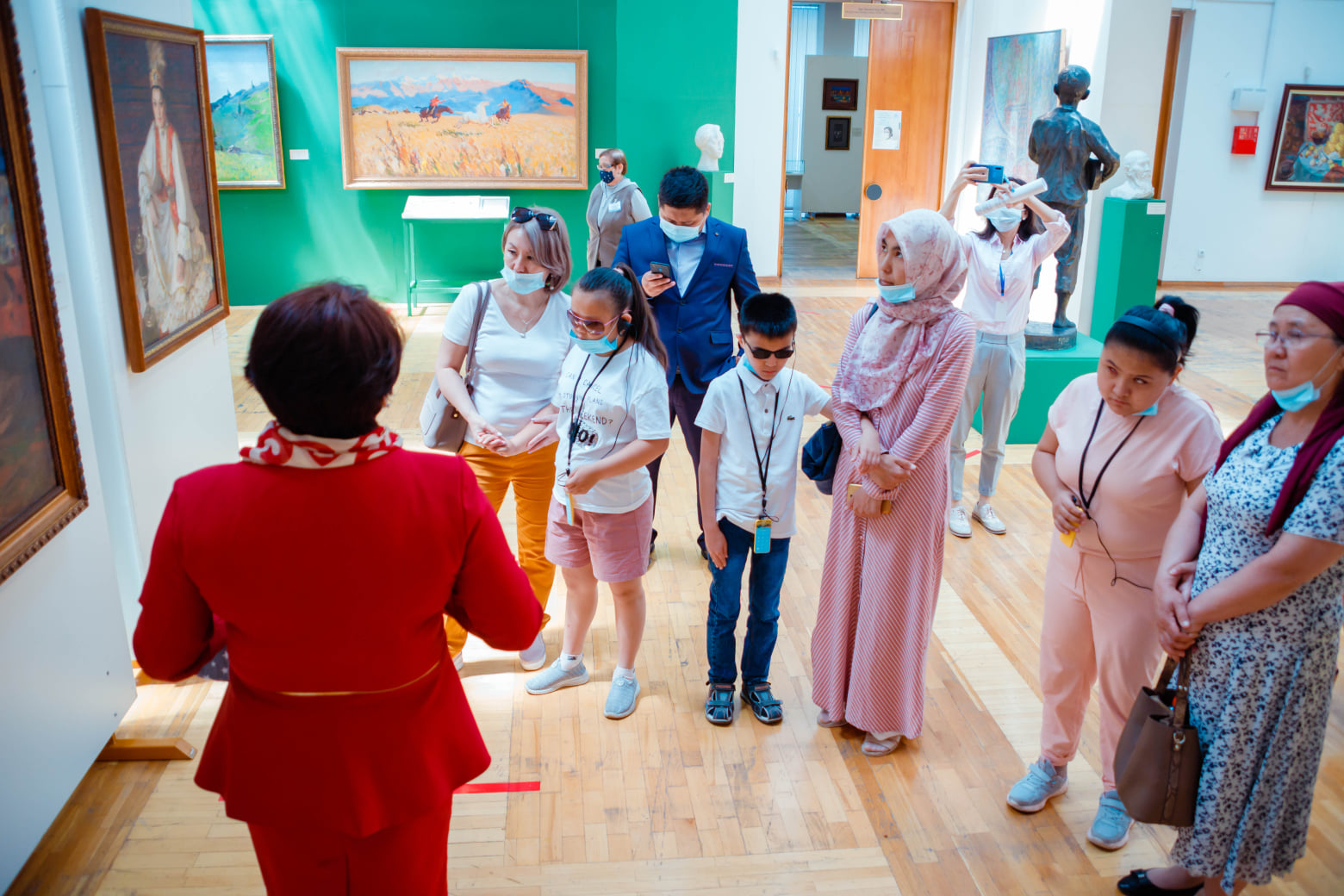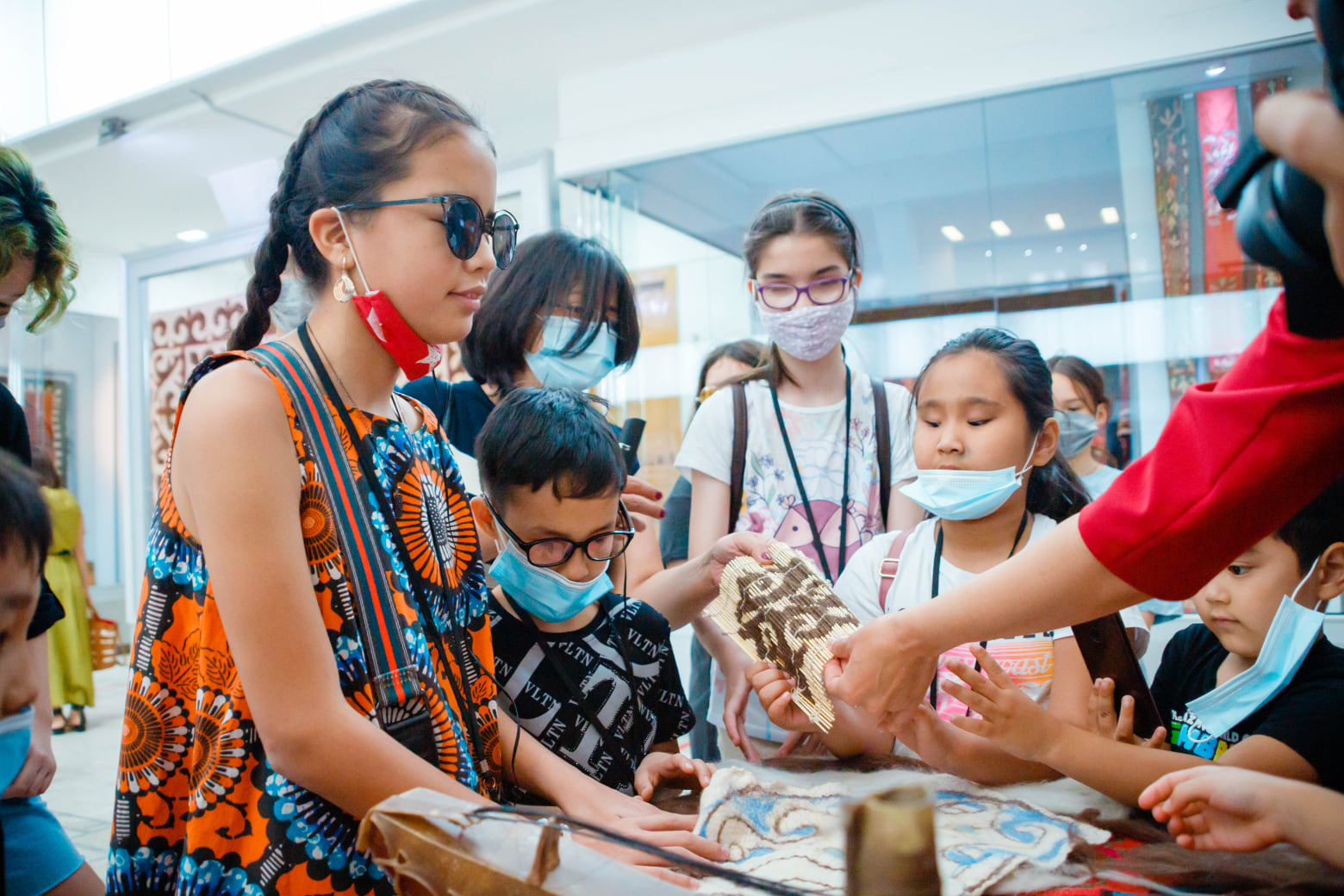NUR-SULTAN – Audio descriptions of more than 50 art and history exhibits for visitors with visual impairments were introduced at the Abilkhan Kasteev State Museum of Arts in Almaty on June 1, reported Kazinform.

The launch of the audio description project occurred on the International Children’s Day on June 1. Photo credit: Dara.kz.
The innovation helps to improve the accessibility of the museum for visitors with special needs, particularly children. An audio description in museums is a form of storytelling that assists in guiding visitors throughout the exhibitions. It also provides detailed descriptions of the exhibits by addressing the size, shape, color, texture and details of each object.
The exhibits for audio description were selected in order to cover as much as possible and include objects showcasing a geographical and historical variety. Exhibits from temporary exhibitions are also included. The descriptions are done in the Kazakh and Russian languages. The total duration of the soundtracks is more than 100 minutes.

The content and description of the exhibits were very meticulously worked out to make sure that the words used would be understandable and accessible for everyone. The main task of the descriptions was to be interesting for the children while, at the same time, maximizing the beauty of each object displayed at the museum.
“The audio descriptions cover objects of applied art, historical life, national costumes, paintings by famous artists, сollected in the painting hall of Abilkhan Kasteev. The Kazakh art from the 1930s to the present, Russian art of the early 17th and 20th centuries, as well as works of Western Europe of the 16th-19th centuries, are represented in the descriptions. In addition, the museum building and the street it is located on now have a verbal description,” said Natalia Bazhenova, an employee of the Department of Decorative and Applied Arts of the Kasteev Museum.
This recent audio description project is not the first time the Kasteev Museum has been at the forefront of ensuring inclusivity for its visitors. In previous years, the museum partnered with different charitable organizations to set up exhibitions showcasing relief paintings and another audio description exhibition consisting of 15 works.

The implementation of the audio description at the museum this year was completed as part of the Discover the World project by the Dara Charity Foundation. The project’s goal is to create an inclusive environment for children with hearing and visual impairments by assisting schools and other institutions in establishing infrastructure that would allow all children to study and create equally.
“Having a blind child could be very difficult for a family. The parents face many challenges. There is a lack of accessibility of infrastructures and often the parents find themselves in such a situation when they do not know how to handle it and how to assist their child in growth and development,” said Director of the Discover the World project Maral Sheshembekova.
Today, according to the Nur Association of Social and Labor Rehabilitation Organizations for People with Visual Disability, more than 20,000 people with visual impairments live in the country. Kazakhstan formally ratified the UN Convention on the Rights of Persons with Disabilities in 2015.
However, there are still many barriers preventing people with visual impairments from fully participating in cultural and social aspects of life. The equipment of the Kasteev Museum, now with audio description, aims to demonstrate the tools and practices that other museums across the country could potentially adapt to become more inclusive.


